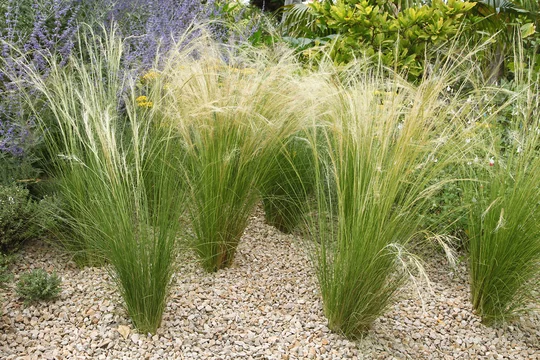Mexican Feather Grass is a well-known, evergreen and perennial plant. Additionally, its leaves are green and their shape is upward linear. Besides that, the foliage of this plant is available in the silver-green colour that turns into beautiful buff colour in late summer. Most probably, these are very useful plants like other pretty plants if you want to place them in your garden. In addition to this, these plants are beneficial because they have no toxic effects reportedly. These are also considered edible because you can use these plants as your food also. Furthermore, the process of growing is not so difficult so you can grow it anywhere without any difficulty.
Common Name: The common name of this plant is Stipa tenuissima.
Scientific Name: The scientific name of this plant is Stipa tenuissima.
Family: This belongs to the family of Poaceae.
Subfamily:Pooidea.
Genus:Its genus is Nasella.
Species:N. Tenuissima.
Hardiness Zone:The USDA hardiness zone for these plants is 7_11.
Height:These are easy growing plants and can grow about 1 to 2 cm.
Origin: This plant was first discovered in the Southwestern United States.
Regions where these plants are naturalized:
These plants are naturalized in Australia, Mexico and Argentina.
Soil Needs: These plants mostly like that type of soil that is well-drained, moist and loamy. It is important to provide it slightly Akaline and acidic soil to not make it soggy too much. Instead of that if you place it in granular soil then this will be the best condition for its healthy growth.The best PH level for this plant lies between 6_7m.
Sunlight Needs: These are full sun-loving plants as they cannot survive in a shaded area. To make its growth possible beneficially it is important to avoid partial or full shade areas. Because if you put it in a shaded place then there is a chance that this plant may die.
Watering: Like many other factors, water plays also a very essential role in the process of growing plants. As these are drought-tolerant plants so they don’t need too much water. Don’t mulch or feed it a lot because it doesn’t work on it. Too much water-rich soil can cause floppy growth. Besides that, the weather is also one factor that tells how much water you should provide this plant.
Fertilization: Making plants more healthy and useful it is important to provide it suitable fertilizer. For this purpose always apply the best quality fertilizers as they can give beneficial impacts. The Suitable fertilizer for Stipa plants is 10_10_10.
Harvesting: Harvesting is also a very beneficial step in making successful growth possible. The best way to harvest these types of plants is to simply cover their seeds with cotton paper or hedges.
Pruning: To give a beautiful shape to plants pruning is important. However, Stipa does not require too much pruning as you simply cut its dead leaves or overgrown stems for maintaining its shape. The best time to prune this plant is late autumn.
Medical Uses:
Some of the beneficial medical uses of Stipa tenuissima are given below let’s have a look:
- It helps to reduce inflammation.
- Beneficial in making beauty products.
- Useful in curing skin diseases.
Final Verdict:These are useful deciduous and evergreen plants. As you can see these have benefits as they are toxic-free so you have not to worry about your kids and pets. Besides that, you can use this as your food as these are highly edible. Additionally, so many traditional useful medicines are made with the help of this plant. Significantly, their growing process is simple and easy so you can grow it at your home for making your garden more attractive.

